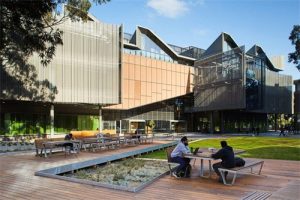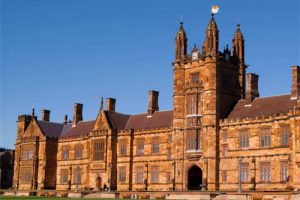
” 写作CIE4365 Coupled ProcessesPersonal Assignment: Reactive Transport, CIE4365 Coupled Processes(Deadline Tuesday June 22, 2021)6th June 20211 Coupling Richards Equation, Heat Flow and Reactive Solute Trans-portWrite a MATLAB or Python code where you expand the code for unsaturated water and heat flow problem with acode for reactive transport. We will solve the simplified problem of microbial mineralization of glucose in soil thatwas introduced during the lecture (see lecture slides Lecture_biogeochemistry_2020.pdf). You need to implementthe problem, write a short report including a summary of the important equations, your assumptions and thescenarios you implemented.Please note, this is one of the individual assignments for the final grade.2 ApproachIn order to solve this problem we need to consider the states which will change during the simulation. Whenmodeling reactive transport all chemical species involved are states, so for this problem, in addition to the pressurehead (hw) and temperature (T ), we also need to consider the concentrations of oxygen (O2), glucose (C6H12O6),bacterial biomass (X or C5H9O2.5), CO2 and water (H2O). In order to simplify the problem we will initially assumethat only oxygen is transported with the water. Both glucose and biomass are immobile and present, dissolved inthe water phase, everywhere in the Column. As a consequence, the total mass of glucose and biomass present in thenodes can change if the amount of water decreases, so the first version of the model should be implemented withinitial and boundary conditions that ensure that glucose concentrations remain constant. The initial concentrationof oxygen in the column is zero and it enters the column dissolved in the water entering the soil column at thetop. We initially assume that the growth and death rates of biomass are equal so the dissolved concentration of ofliving biomass remains constant (steady-state). Glucose is consumed and therefore depletes in time. As we are notinterested in the evolution of the CO2 concentrations in time we disregard this state. Therefore, we only need tosimulate the rate of change in the oxygen and glucose concentrations.In order to program this problem it is important to increase the complexity of the program step by step, whileensuring correct functioning of the code at every step. I suggest you follow the following steps:1. Use the implementation of the heat flow as a template for the transport single solute (one extra state)without reaction. Please note that the diffusion constant is temperature dependent (see section on equations).Implement the code with some very simple boundary conditions so you can check the functioning of the code(constant flow, and temperature, fully saturated column).2. Expand the solute transport code with extra solutes (i.e. extra states). Please make this expansion as generalas possible so adding extra Solutes is as easy as possible.3. Include reaction terms in order to add the reaction between the different compounds (in this case you startby calculating the rate of change in oxygen, and from this the rate of change in glucose. If you want you canalso include the rate of change in bacterial biomass and water content as well.4. Use the complex derivative version of the Jacobian matrices. Check the number of non-zero diagonals and seeif they indeed fit your problem. Please note that some times the Jacobian contains some very small numbersdue to round off errors, sometimes you have to remove this before analyzing the Jacobian. You can plot theposition of the non-zero values in a matrix with the matplotlib or matlab function spy.15. Finalize the code by including the enthalpy change in the heat flow code.6. Run a range of scenarios which you create to test certain conditions.3 EquationsAs is given in the slides, the water balance, heat balance and solute balance equations are:?w?t= C (hw)?hw?t= ?? qw +Rwb?T?t= ?? qH + wRO2RH ? T?b(w)?w?w?tw?C?t= ?? qS + wRS ? C?w?twhereqw = Kwsatkrw(?hw +?z)qH = ?(w)?T + qwwTqS = ?D(w, T )?C + qwCwhere the parameters and variables for the water and heat balance equation are the same as in the previousassignments, C is the concentration in the water phase of a solute , D(w, T ) is the diffusivity of solute in thewater phase which is a function of water content and temperature.In this problem We add local sink-source terms (Rw, RH , and RS which includes RO2 ,) to the balance equationswhich are dependent on the chemical stoichiometry and Monod-functions:RO2 = ?5.4max(T )YxsCXCO2CO2 +KSSeffRC6H12O6 =15.4RO2RH2O =?5.555.4RO2RH = ?2800 [kJ/molO2 ]The diffusion constant for the solutes depends on water content and temperature dependent and can be describedwith an Arrhenius equation:D(w) =D0wexp(?Ea,RT)where D0 is the diffusion constant, Ea, is the activation energy of diffusion, and is the tortuosity factor accountingfor the increased path length in a tortuous porous system and R is the gas constant [8.3145 J/(mol K)]. The maximumgrowth rate also depends on temperature according to an Arrhenius equation:max(T ) = max25 exp(64R(125? 1T ? 273.15))where max25 is The maximum growth at 25oC.24 Parameter valuesYou can use the following parameters for the model:parameter unit valueCX mol/L 0.001CO2 inflow mol/L 0.630 10?3CC6H12O6 initial mol/L 0.05molar mass H2O g/mol 18max25 mol/(L day) 1Ks mol/L 0.1D0,O2 m2/day 0.3034Ea,O2 J/mol 18.23 103 [-] 0.5Yxs molX/molgluc 0.1Of course you can also vary these parameter in the final step where you test different scenarios.5 Boundary conditionsEnsure that your model works for all boundary conditions you applied in the previous assignments. Clearly explainboundary conditions you used to test the assignment.The final problem is a scenario where you start with a fully saturated column with the above described initialconditions (no oxygen, biomass and glucose present in the liquid phase). Then the column is allowed to drain whilewater is added to the top of the Column at a rate of 5 mm/day. This water has an oxygen concentration of 10 mg/L(or 0.630 10?3mol/L). Assume your soil is a 1 meter column of fine sandy soil with a capillary rise of about 0.5m. The final steady state is in equilibrium with a water table at 0.5 m below the bottom of the column.请加QQ:99515681 或邮箱:99515681@qq.com WX:codehelp
“
添加老师微信回复‘’官网 辅导‘’获取专业老师帮助,或点击联系老师1对1在线指导。








